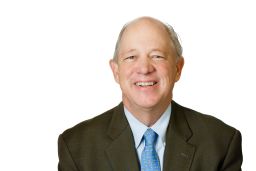Editor’s Note: Billy Shore is the founder and executive chair of Share Our Strength, the parent organization for the No Kid Hungry campaign. He is the host of Share Our Strength’s podcast, Add Passion and Stir. The opinions expressed in this commentary are his own. View more opinion at CNN.
Every week, leaders from some of the largest anti-hunger organizations and other nonprofits responding to the Covid-19 crisis get together by Zoom to compare notes: How many people have our efforts fed? How many more families will we need to reach? What obstacles will we still need to address? This collaborative effort is a marvel of social entrepreneurship and nonprofit persistence, and we should be proud. But it is also an infuriating, disgraceful reminder that millions of Americans must depend on this patchwork system to provide their families the food that could mean the difference between sickness and health.

Among many things, this crisis has exposed the parallel menace that many Americans live with every day: food insecurity and the more than 11 million children facing hunger in our country because of it. While there may not be a cure for Covid-19 in sight, the hunger that so many families across the country are suffering while out of school and work is eminently and immediately solvable.
While hunger may have been less visible before coronavirus, it still afflicted far too many Americans. It was solvable then too. Jim Wallis, the founder of Sojourners and a wise leader of the faith community told me, “This virus is revealing so much of what was true before.”
Unlike the tragic shortage of N-95 masks and ventilators, we have no shortage of food in America. Nor is there a shortage of effective food assistance programs. The Supplemental Nutrition Assistance Program (SNAP), school lunch and school breakfast, WIC and summer meals all exist and are available for low-income families that need them.
But too often bureaucratic and logistical barriers make them hard to access. Today those obstacles are putting the health and the very lives of vulnerable families in jeopardy.
For the past 10 years our No Kid Hungry campaign has knocked down many barriers that existed between a hungry child and a healthy meal. We made enormous progress, adding more than 3 million eligible kids to school breakfast, as just one example.
Over the last month we’ve had to start anew.
Though massive in scale, feeding children during the pandemic is a solvable problem as well.
With almost all of America’s schools closed, affecting the 22 million kids who rely on free or reduced price meals, we’ve figured out how to work with school districts and community organizations across the entire country to find alternate ways to feed kids. Sometimes it means distributing food to parents outside of schools, or having bus drivers drop meals off instead of picking kids up. Jennifer LeBarre, the school nutrition director for the San Francisco Unified School District, told me in a recent interview, “We’ve always had to figure out how to feed kids. Just not this way.”
We’ve met the challenge by helping to quickly pass new federal and state laws and regulatory changes to give communities more flexibility and funding for needs, ranging from equipment to boots on the ground. By making emergency grants to 348 organizations and counting – mostly school districts and organizations in rural communities – we’ve been able to help the most vulnerable and the hardest to reach.
And even when additional flexibility has not been legislated, Americans are acting on their own, often showing more common sense than their government. Schools that may only be reimbursed for feeding children are nevertheless finding ways to feed adults in need within their communities as well. It is what this crisis, decency and humanity demand.
If we are smart enough and strong enough as we navigate the coronavirus, we will go forward with these important truths in mind:
First, pandemics don’t discriminate, but that doesn’t mean their impact is felt or suffered equally. It isn’t.
Low-income Americans and especially those of color do not always have the access to resources, health care, nutrition, housing and safe spaces that are essential to protecting the health of their families. Yes, we need to commit to a vaccine that eliminates the coronavirus. But as David Leonhardt of The New York Times pointed out in his analysis, we also need a comprehensive campaign to finally end inequality. In the meantime, we must move aggressively to protect those whose lives are being hit hardest by this crisis.
Second, the best way to feed Americans is not handing out emergency food packages at schools but ensuring that they have sufficient resources to feed themselves. This starts with increasing SNAP assistance, which is the most effective way to feed families at scale during this crisis. An increase of just 15% would help offset the significant loss in income and soaring unemployment resulting from Covid-19-related closures and disruptions.
Third, we already know the threat of food insecurity, declining health and financial distress will become even greater for children and low-income families during the summer when school is out of session. We should take what we’ve learned in the last few weeks and apply best practices through the end of the school year and during the summer to ensure kids and families don’t experience that slide into hunger we know all too well.
And finally, when it’s safe for our nation’s children to go back to school, we should categorize school meals as essential supplies, like textbooks and pencils. With tens of millions of Americans losing jobs and filing for unemployment benefits, our children will need this support as never before and for quite some time.
Despite the crisis that currently surrounds us, hunger remains one of our most solvable problems – before, during and after the coronavirus.

